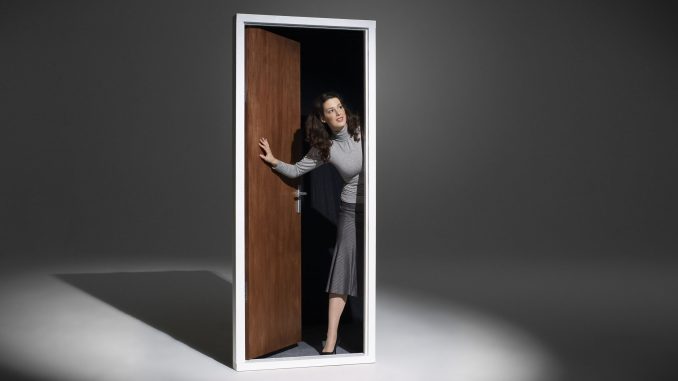
The federal government has more than 90 welfare and workforce programs spread across dozens of federal agencies, with funding flowing to thousands of state and local agencies and programs.
Navigating the web of welfare and workforce assistance can be a nightmare. And, too often, Americans end up trapped in the welfare web instead of being assisted into work and upward mobility.
What if, instead of having to go to several different offices and working with multiple caseworkers, individuals in need of assistance could walk through one door to access the entirety of government welfare and workforce supports?
Utah provides such a “One Door” model, which it successfully developed and deployed over the past 25 years. But federal policies currently prohibit other states from enacting similar models.
In 1997, Utah passed legislation to consolidate its welfare and workforce training programs into a single Department of Workforce Services. Realizing the interconnectedness of welfare supports and workforce training, as well as the administrative and procedural hurdles faced by both participants and administrators, Utah embarked on an even bolder plan.
Today, Utah has consolidated more than 36 workforce and welfare services, previously spread across five agencies, into the Department of Workplace Services. That includes integrating unemployment insurance, food aid, health care, and cash assistance.
In addition to being able to walk through just one door to get related services, Utah residents work with only one employment counselor. That counselor helps assess an individual’s capabilities and needs and develop a strategic plan—aimed at empowerment through work—to access available benefits.
Another key to Utah’s model is that it simplifies the system not only for recipients of benefits but also for administrators. Mason Bishop, a fellow at the American Enterprise Institute, explains in “The Utah Model” tool kit that the state’s innovation in governance and financial management are critical to its success.
Utah’s governance includes consistency in services and shared efficiencies across locations while also, similar to a business franchise model, allowing local leaders to tailor their systems to meet community-specific needs. And Utah’s financial model provides an innovative approach to eliminating needless bureaucratic compliance costs and maximizing resources across different programs.
The result is a drastically bigger bang for the buck from federal welfare and workforce funds. The success of Utah’s “One Door” model is undeniable.
Take the state’s employment-to-population ratio, which incorporates both labor force participation and unemployment: Before Utah’s “One Door” system (from 1976 to 1997), the state’s employment-to-population ratio was 4.2 percentage points higher than the rest of the U.S.
Since embarking on “One Door,” Utah’s advantage has averaged 6 percentage points and currently stands at 7.3 points. The state’s employment-to-population ratio is currently 67.4%; for the entire U.S., it’s 60.1%.
When the COVID-19 pandemic hit and millions of Americans lost their jobs, most states struggled with outdated unemployment insurance systems that prevented them from quickly delivering benefits to those in need (and also resulting in massive fraud and abuse).
Meanwhile, Utah’s integration of services and ability to shift resources allowed the state to deliver unemployment benefits quickly while also promoting rapid reemployment by connecting directly with 40% of unemployment insurance claimants and letting them know how the Department of Workplace Services could help them find a job.
By August 2020, Utah’s unemployment rate plummeted to 4.9% (vs. 8.4% nationwide). By December 2020, it was 3.6% (vs. 6.7% nationwide). The national unemployment rate didn’t fall to 3.6% until 15 months later, in March 2022 (at which point Utah’s was 2.2%).
Although much of the U.S. has struggled with labor shortages (millions of workers still haven’t come back into the workforce since the pandemic began), Utah’s workforce grew substantially. If the rest of the U.S. had followed the same path, 5 million more Americans would be working today.
When more Americans are working and contributing to the economy instead of sitting on the sidelines, often relying on taxpayer-funded welfare benefits, that helps the economy grow and relieves pressure on government budgets.
Between 2017 and 2022, real inflation-adjusted gross domestic product increased 11.3% across the U.S. while Utah’s GDP surged 24.3%—more than twice as much. And as federal debt climbs to historic levels, Utah’s debt reached a 35-year low in 2023 even as the state enacted significant tax cuts in 2021, 2022, and 2023.
If Utah’s model is so successful, why haven’t more states adopted it? Some states—including Texas, Louisiana, and Maine—want to move toward “One Door” systems. But although Utah’s system was grandfathered when Congress passed the Workforce Innovation and Opportunity Act of 2014, federal law prevents other states from following Utah’s lead.
The House of Representatives recently passed a bipartisan bill, the Stronger Workforce for America Act, to reauthorize that law. It provides two potential ways for states to pursue “One Door” policies, but those opportunities are limited to a few states.
With millions of workers on the sidelines, many families feeling trapped in welfare, and employers struggling to find the workers they need, no state should be prevented from helping get more people into meaningful work.
Policymakers should use this bipartisan reauthorization to expand “One Door” integration to any state that wants it. One way to do that would be to include the One Door to Work Act in the bipartisan Stronger Workforce for America Act.
Have an opinion about this article? To sound off, please email letters@DailySignal.com, and we’ll consider publishing your edited remarks in our regular “We Hear You” feature. Remember to include the URL or headline of the article plus your name and town and/or state.

